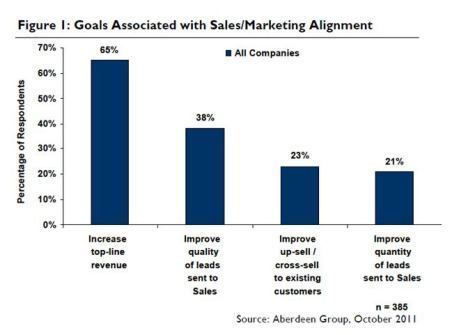Timothy Riesterer's Blog, page 32
April 6, 2012
Personas Can Lead Your Messaging Astray
Does a prospect relate and respond better to your message because you base it on a persona?
If you are like many marketers today, you have created fictional characters with names, demographics, attitudes and behaviors to help frame and target your messages.
The question is: Does your prospect's persona drive the way they respond to your messages or the reason they buy something? Just because they share similar personal and professional characteristics, is that what causes someone to re-think their current approach and consider your "new way" to solve their problems?
Our response is an emphatic, "NO." In fact, focusing your messaging around personas may actually lead your content astray.
Status Quo Profiles – A New Messaging Starting Point
The biggest motivator for whether a prospect responds to your messages is if they believe their status quo is at risk, and whether they are convinced they may need to do something different than they are doing today. This has little to do with demographics and attitudes.
The most overlooked "design point" for customer messaging is a "Status Quo Profile." It's not your target's title, not their segment, not their persona that you need to aim your messaging at; rather, it's about why they need to see their current approach as limiting enough to put their objectives or desired outcomes at risk.
Here's what you need to determine before developing any customer messaging, content or campaigns:
1) How are decision makers solving the challenges your product or service offer to solve today? Your prospects think they are already doing something to solve problems and meet business needs before you come along with your story. So, you need to have a precise understanding of how your most likely potential customers are doing it currently. Your messaging will have to take aim at dislodging an incumbent, so know your opponent.
2) Why do they think it's great? Remember, prospects live in their story. They were doing something before they chose the way they are doing it today, and they assume they already have a better solution than the one they had before. So, chances are you are sending messages to people who don't really think they have a problem. Or at least, they still remember the "benefits" they based their last decision on, and assume they are getting that value.
3) What issues, challenges, threats, risks or missed opportunities have arisen since they likely purchased their current solution or implemented their existing approach? Not everyone is a prospect for your solution, just those who have a certain "installed" approach that can cause limitations due to a changing business environment. You need to focus on the ripest opportunities for change, so document those things that are changing in their industry, their environment, their competitive space, the global marketplace, anything that their status quo approach may not have taken into account, or is ill-equipped to handle.
4) What gaps exist in the current approach that will keep them from avoiding these potential problems, or capitalizing on new opportunities? The first reaction of prospects will be to see if their current approach or solution can "stretch" to overcome the challenges you identify. So, you have to identify and amplify clear gaps in their current approach that will prohibit them from resolving these risks. These gaps need to lead to your unique strengths or advantaged capabilities. Creating gaps that are too wide to cross with the existing status quo is essential for developing messages that will compel prospects to change.
By answering these questions, and using it as the "starting point" for crafting the messages used in your content marketing campaigns and sales tools, you will significantly improve your ability to move prospects to consider change, and choose you.
Compare this to the direction you get with a persona-based approach, and you'll see a significant difference in the relevance and impact of your customer conversations.
Filed under: Deliver Conversations that Win, Develop Messages that Matter Tagged: personas








March 21, 2012
Salesperson in a box: The reality of virtual sales conversations
Each quarter, we survey more than 600 marketing and sales professionals who work in complex, business-to-business selling environments. This quarter, we focused on the unique challenges associated with virtual selling environments. Here's what we found:
58 percent of respondents indicated that they receive insufficient, little or no training for selling over the phone and Web. In fact, the survey found that less than 10 percent of respondents actually feel that they have extensive and relevant training for these types of communications.
When asked how well their organizations have armed them with tools to deliver effective messages in a virtual environment, only 13 percent of respondents felt that they were adequately equipped. More than 50 percent of respondents, however, said that they have insufficient or no tools made available to them.
Respondents noted that more than 64 percent of the time their virtual sales calls involve more than one person, underscoring the need for effective, differentiated messaging and a greater focus on speaking tools for group audiences.
Filed under: Deliver Conversations that Win, Deploy Tools that Get Used Tagged: marketing, Report, sales, Virtual Selling, Whitepaper








March 15, 2012
What Moneyball Can Teach You about Messaging
Imagine your job is to make a movie about statistics.
Sounds fun, huh?
That's exactly the challenge that the director of Moneyball faced.
Moneyball tells the story of how Billy Beane, GM for the Oakland A's, used statistical analysis to find players who were undervalued by other teams.
It was nominated for six Academy Awards, including Best Picture. It made over $100 million.

How did a movie about statistics achieve such success?
Through outstanding storytelling. Storytelling that used numbers in the right way to tell a story.
 The movie opens with a montage of clips from a baseball game between The Oakland A's and the New York Yankees. You see a quote from Mickey Mantle saying, "It's unbelievable how much you don't know about the game you've been playing all your life." You see more clips from the game. You learn that it's an elimination game in the playoffs. Then it flashes two numbers on the screen – $114,457,768 vs. $39,722,689. Then, you get a bit more context. The team names are added to the screen. You see that those numbers represent the payroll of the two teams from the clips. You immediately see the problem. Then… "Columbia Pictures presents… Moneyball."
The movie opens with a montage of clips from a baseball game between The Oakland A's and the New York Yankees. You see a quote from Mickey Mantle saying, "It's unbelievable how much you don't know about the game you've been playing all your life." You see more clips from the game. You learn that it's an elimination game in the playoffs. Then it flashes two numbers on the screen – $114,457,768 vs. $39,722,689. Then, you get a bit more context. The team names are added to the screen. You see that those numbers represent the payroll of the two teams from the clips. You immediately see the problem. Then… "Columbia Pictures presents… Moneyball."
This all occurs in the first 90 seconds of the movie. You're instantly hooked. The problem is clear. How could the A's possibly compete? In a movie about statistics, virtually no other numbers show up in the movie after that.
The director, Bennett Miller, had to figure out a way to get his audience hooked as quickly as possible. He had to show people the challenge his hero was facing. He needed to suck you into the story. And in a story that could have had thousands of numbers, he chose just the right two to get things started.
Part of the magic was in the delivery. Show the numbers. Create suspense around what they might mean. Only then, explain what they represent.
Part of the magic was in the contrast. You can't help but look at those numbers and think, "That's not fair! That's an impossible situation!"
Part of the magic was the insight. You quickly understood the world was different than you realized. Even if you knew that small market baseball teams had trouble competing with the Yankees, it's still hard not to feel shock at the raw disparity in the payrolls.
Less than 90 seconds to get Attention, give a Memorable Insight to the Problem and start the Telling of a Story.
That's an amazing way to start a movie. It's also an amazing way to start a sales message.
What are you doing today to take whatever boring old thing you're selling (and it can't be more boring than a story about statistics) and turn it into an Attention Getting, Memorable Story?
If you love Moneyball, breaking the status quo, or great messaging, then you're going to love our annual Marketing and Sales Messaging Conference, taking place on September 18-20 in Chicago. No, Brad Pitt won't be there… but Billy Beane, the real star of the movie, will be one of our featured keynote speakers. Billy, along with Marketing and Sales leaders at Fortune 100 companies and your favorite Corporate Visions messaging experts, will be there sharing best practices on breaking through the Status Quo Barrier. There's even a special track for sales managers on how to coach to Power Messaging and use the techniques to become more effective leaders.
Register now!
http://conference.corporatevisions.com
Erik Peterson
SVP of Strategic Consulting, Corporate Visions Inc.
Filed under: Deliver Conversations that Win, Distinct Point of View, Word Play Tagged: Billy Beane, Marketing and Sales Messaging Conference, Moneyball








March 8, 2012
Make sure your messages and medium stimulate the right part of your prospect's brain

Three ideas for improving demand gen approach for loosening your prospects' "status quo"
Brain research proves that humans make decisions to "change" or "do something different" that are more adaptive than rational. This has major consequences for the way you develop messages and deliver them in your demand generation programs. Unfortunately, you may be mistakenly messaging for "information" vs. messaging for a "decision."
Stimulate the Old Brain
People use their neocortex (new brain) to analyze information. But, they actually make decisions using the limbic system (old brain), which is designed to make the fast, instinctual choices that ensure survival. As it turns out, people (and prospects) tend to move away from pain faster than they move toward gain.
Many consumer marketers have figured this out. But, in B2B, marketers tend to be driven by what your product is and what it does – features and benefits. But, last time I checked, a B2B prospect has the same brain as every other human. So, your messages and media choices need to change — potentially dramatically — to improve your demand gen performance.
The old brain craves visual imagery that shows contrast and emotional messaging that provokes its survival instinct. Here are the three biggest old brain-driven changes you need to consider to improve your demand gen programs:
#1: Video is the Best Medium
The old brain craves visual imagery over written words because there is no language capacity in the old brain. To activate your prospects' old brains you need to transform your traditional written word messages into visual vignettes to deliver your early stage, status quo-busting messages. The only job of your email copy is to drive your prospect to watch the video.
Aside: In the next two points, I will model this recommendation by introducing you to two common messaging mistakes that you can fix to make sure your demand generation programs stimulate the old brain – leveraging brief, emotional copy and a short video.
#2: Context Creates Urgency
Recent research shows that your prospects believe almost 90% of marketing messages fail to create commercial impact. In other words, your value propositions don't cause prospects to want to do anything different. If you want to create more demand, you need to put your solution into an urgent context that gets your suspects to reconsider their status quo. Show them the threats, challenges, and missed opportunities that make their status quo "unsafe," and put their desired outcomes at risk.
Context Creates Urgency – WATCH 3-MINUTE VIDEO NOW
#3: Contrast Creates Value
Your prospect's old brain needs to see clear contrast to make a decision. A lack of perceived contrast between your solution and the status quo means the customer will not see enough value to change. They'll think they can solve the problems with their existing solution. You must help them visualize the pains caused by their current situation, the gaps in their current approach, and show how the gaps won't solve the pain and won't allow them to realize the significant gain promised by your better approach.
Contrast Creates Value – WATCH 3-MINUTE VIDEO NOW
Your Distinct Point of View
What this article is suggesting is that you need to replace traditional approaches to creating value propositions with a new message and medium for creating and delivering a distinct point of view. If you want to go even deeper into this topic check out www.corporatevisions.com where I provide more detailed content on how you can create more provocative content.
By Tim Riesterer, co-author of "Customer Message Management" and "Conversations that Win the Complex Sale" and Chief Strategy and Marketing Officer at Corporate Visions
Filed under: Uncatergorized







March 6, 2012
Stop paralyzing your prospects

Have you heard the ancient story of Buridan's donkey? A donkey is placed precisely midway between two identical piles of hay. As the donkey contemplates his decision, he becomes paralyzed. Unable to make a rational decision to choose one haystack over the other, he dies of starvation.
I've been thinking about this story because it illustrates what marketing and sales professionals sometimes do to their prospects and customers when you fail to differentiate your company, products or services. Bombarding your prospects with me-too messages not only confuses your buyer, but can leave them paralyzed. Unsure where to invest their money, time and energy, the safest choice for them is no decision. Meanwhile, there is a business problem that is going unsolved.
You need to stand out in a world of sameness. A fellow at Gartner, an analyst firm that gets paid big bucks to help high tech decision makers choose between complex IT products, recently said:
"It doesn't matter what product you buy. Most products are now good enough to serve the majority of users most of the time."
Simon Hayward, VP and Gartner Fellow in Gartner blog (2008)
Now, you know times are tough when even the company paid to help technology decision makers differentiate can't differentiate between products.
Creating contrast between your solution, your competitors' solutions, and your prospects' status quo is one of the keys to getting your prospects to make a decision.
Check out this short clip on how use contrast in your messaging to create urgency to buy.
Want to learn how to break the status quo barrier, check out How to Break the Status Quo Barrier
Filed under: Deliver Conversations that Win, Distinct Point of View, Message Creation, Your Buyer's Mind








February 14, 2012
How to Steal Your Competitors' Best Customers
Most of the time, when you steal customers from your competitors, they are one of two types: extremely unhappy with the product or service (which could also mean they're high-maintenance), or loss leaders that your competitors don't really want. The customers you really want to steal are the ones that are profitable and low maintenance. Impossible, you say? Your competitors' loyal clients may be less secure than you think. They may have problems they don't even realize, or may be missing opportunities they are unaware of, but in either case, their desired outcomes may be at risk if they continue to take a "status quo approach." What they don't know can hurt them!
If your competitors' salespeople are like most, their intuition tells them that their job is to always keep the client happy. They think a successful client relationship is one in which everyone is always smiling. They spend a lot of time and energy trying to maintain a positive equilibrium, as if the client relationship, and whether they are liked, is the endgame.
Incumbents also don't like to introduce change for fear that it may open up the customer to consider alternatives. When you are the status quo, maintaining it is job #1. It's a dangerous belief—and a little naïve. It also makes for a great opportunity for you to steal some business.
What the competitors' customers don't know can hurt them. And as the outsider, it's your job to break the "bad news."
You need to get their senior executives' attention by telling them something they don't know, about a risk or missed opportunity they don't know they have. You need to challenge their status quo approach (which includes your competitor).
Here's what you need to do:
You must be willing to push your competitors' customers out of their comfort zone.
You need to help your competitors' customers see their challenges in a new light.
You have to highlight specific, painful situations and make them unmistakably urgent.
You need to create constructive tension and use it to your advantage.
This is counterintuitive to many companies and salespeople who are afraid that the customer will shoot the messenger… but it's what it takes to make an impact. You need to deliver a distinct point of view that adds value to these prospects by getting them to consider why their status quo is no longer safe, and see the opportunity in doing something different.
To learn more, watch our on-demand webinar: Distinct Point of View: Bring Them the Bad News.
Filed under: Deliver Conversations that Win, Distinct Point of View Tagged: Deliver Conversations that Win, Distinct Point of View, Message Creation








How to Steal Your Competitors Best Customers
Most of the time when you steal customers from your competitors they are one of two types: extremely unhappy with the product or service (which could also mean high-maintenance), or loss leaders that your competitors don't really want. But, the customers you really want to steal are the ones that are profitable and low maintenance. Impossible you say? Your competitors' loyal clients may be less secure than you think. They may have problems they don't even realize, or may be missing opportunities they are unaware of, but in either case their desired outcomes may be at risk if they continue to take a "status quo approach." What they don't know can hurt them!
If you competitors' sales people are like most, their intuition tells them that their job is to always keep the client happy. They think a successful client relationship is one in which everyone is always smiling. They spend a lot of time and energy trying to maintain a positive equilibrium, as if the client relationship, and whether they are liked, is the endgame.
Incumbents also don't like to introduce change for fear that it may open up the customer to consider alternatives. So, maintaining the status quo is job one, when you are the status quo. This is a dangerous belief—and it's a little naïve. This also makes for a great opportunity for you to steal business from your competitors.
What the competitors' customers don't know can hurt them. And, it's your job as the outsider to break the "bad news."
You need to get their senior executives' attention by telling them something they don't know, about a risk or missed opportunity they don't know they have. You need to challenge their status quo approach (which includes your competitor).
In order to achieve this here is what you need to do:
You must be willing to push your prospects customers out of their comfort zone.
You need to help your competitors' customers see their challenges in a new light.
You have to highlight specific painful situations and make them unmistakably urgent.
You need to create constructive tension and use it to your advantage.
This is counter intuitive to many companies and sales people, who are afraid that the customer will shoot the messenger, but that is exactly what you need to do in order to steal your competitor's best customers. When you only have 30 seconds, you cannot play 20 questions. You need to deliver a distinct point of view that adds value to these prospects by getting them to consider why their status quo is no longer safe, and see the opportunity in doing something different.
To learn more watch our free webinar Distinct Point of View: Bring Them the Bad News.
Filed under: Deliver Conversations that Win, Distinct Point of View Tagged: Deliver Conversations that Win, Distinct Point of View, Message Creation








February 13, 2012
Are you relying on Union Rules for your sales messaging?
Then you're killing deals.
Recently one of our consultants, Scott Weinhold, was on a tram while connecting flights between client events, and he couldn't resist sneaking a photo of an airline pilot's luggage. What caught his eye was the bag tag promoting the pilot's union. Here was the union's attempt to create value for themselves:
In case the image is too fuzzy for you to read (this was a "stealth" snap on a phone while the tram was in motion) the tag says, "WE ARE WORTH IT!"
This union message reminded me of the same theme in thousands of marketing and sales pitches happening this very moment. Sales reps rely on "union rules" for delivering messages to communicate the value of their solution. For example: "We have the best technology!" "We have the best people!" "We have the best service!"
In other words, "WE ARE WORTH IT!"
What happens to your prospect or customer when you start telling them why your solutions and your company are "worth it?" Do they grab for their checkbook and say, "How much will that be? We've been waiting for someone to come in and tell us how 'worth it' they are…"
Charlie Sheen Effect
This type of "union rules" sales messaging approach triggers what I call the "Charlie Sheen Effect."
Several months ago, Charlie Sheen hosted a webcast of his own ("Sheen's Korner"). During the first few seconds, over 100,000 attendees logged in. Within four minutes, less than 5,000 remained.
Why over a 95% reduction in attention? Because no one wants to hear boring and irrelevant bragging.
When your prospects and customers see a salesperson present slide after slide of why your company and products are so wonderful, they tune out. Your sales rep's effort to create value in the mind of your prospect comes across as boring and irrelevant bragging.
Based on our work with hundreds of the largest sales forces, these "WE ARE WORTH IT" sales conversations spread across your organization with no effort at all. They are like a virus. If you do nothing to stop them, these boring and irrelevant sales messages will replicate all on their own.
In fact, unless you're laser-focused and intentional about equipping your sales force with the right messages, tools, and skills, you can assume at least 80% of your reps will follow "union rules" in their next sales conversation.
Why do "Union Rules Messages" Happen?
It may seem obvious to you. You've been told for years you need to be customer centric. So, why do companies continue to create and deliver "union rules" type messaging?
Because it makes companies and salespeople feel good about themselves, the product they are selling and the company they work for. The biggest enemy to great sales messaging is the natural drift of companies to create messaging that fires them up. That gets them jazzed. That rallies the troops.
Have you ever been in a message development session? How do messages get chosen? It's usually the phrases that get everyone, especially the executives, inside the company excited when they see it on posters, advertisements, billboards, buttons and t-shirts.
But, none of that has anything to do with getting your customers to care. Your prized prospects don't care about what fires you up. Don't force them to love your "union rules story." Save the internal cheerleading for inside the company.
Filed under: Deliver Conversations that Win, Focus on the Buyer, Focus on your Prospect, Message Creation, Power Positions & Differentiation








January 24, 2012
Is Your Brand Message Archaic?
Desktop computers, fax machines and the floppy disk drive – at one point each of these technological advances were fundamental components of our daily lives, but now, most are considered archaic.
The same may be true for your classic 30,000-foot brand messaging. It's obsolete.
The proliferation of new media channels and mobile devices creates buyer demand for information and insights that are relevant to them and their needs, when and where they need it. They don't have the time or the inclination toward the big, bad company-centric branding campaigns of the past. It's now a 3-foot brand message – the distance between your customer and their digital access screen of choice – that counts.
Unfortunately, the coolness factor associated with the technology involved has skewed some of the focus toward the medium, but it's still the message that really rules. And, it requires you to re-think your brand messaging development approach.
Insights not Promotions
People want ideas. They want to be inspired. Insights are for sale in this new messaging environment where re-tweeting stuff that impresses you is part of the daily routine. Unfortunately, research shows that your prospective decision-makers believe only 10-14% of company selling messages offer anything unique or relevant.
That means 90% of the stuff you put out is seen as the same as your competitors. After a while, your prospects and customers will just tune out the blah, blah, blah. And now you are faced with breaking through a physical barrier more difficult than penetrating the earth's gravitational field.
Make your Brand Live Inside Your Customers' Story
Here's how you do it. Instead of telling a brand story that is all about you, translate your messages to live inside your prospects' and customers' story.
All humans live in story. Your story is the window through which you look at your world. Your story affects how you make decisions. Developmental psychologist refers to this concept as your "schema."
Pretend for a minute that you are a sea captain living in the early 14th century and you believe that the earth is flat. Your long-range planning tool is a spyglass – a little telescope that you can pull out of your pocket and extend so that you can see far distances. This is your risk avoidance tool. It helps you determine where the earth "ends" so you don't risk falling off.
Now imagine that there's an inventor who happens to be living during the same period. He has discovered a great new navigational technology – the compass. He brings it to you and says, "With this new invention you can sail your ship due West and discover the other side of world." Would you be sold? Probably not. Why? Because you live in a "flat world" story. You believe if you buy this technology, it will kill you as you blindly sail off the edge of the earth.
This analogy holds true today when your sales and marketing team tell the brand story about who you are and what you do. Your story needs to be translated into your prospects' world. What top companies have figured out is that everything they do must be translated from a story about you to a story about your prospect. Otherwise, your brand risks becoming archaic like the desktop computer, fax machine, floppy disk drive and the spyglass.
Learn how to tell a story that sells watch – The Power of Story.
Filed under: Deliver Conversations that Win, The Power of Stories Tagged: Brand message








January 17, 2012
Three Ways to Align Marketing and Sales in 2012
 There has been a lot of talk (decades, really) about aligning Marketing and Sales. Like peanut butter and chocolate, separately, they get the job done. But put them together and you've produced a work of gastronomic genius that you can't imagine ever splitting up again.
There has been a lot of talk (decades, really) about aligning Marketing and Sales. Like peanut butter and chocolate, separately, they get the job done. But put them together and you've produced a work of gastronomic genius that you can't imagine ever splitting up again.
Yet, most organizations are still trying to get the recipe right.
Is your company best-in-class when it comes to getting these two functions working together, and holding them accountable for their performance?
This question is the basis of a new benchmark report published by Aberdeen called Sales and Marketing Alignment: The New Power Couple. Here are three highlights to help you nail the alignment challenge this year.
1. Hold Your Marketing and Sales Messaging Accountable for Driving Revenue
Previously, Aberdeen has shown that best-in-class companies recognize that marketing and sales alignment is driven by effective customer conversations, so are significantly increasing their investment in training their marketers and salespeople to create and deliver great messaging. They realize that it's not only about where you show up… it's about what you say when you get there.
This year, Aberdeen found that best-in-class Marketers are being kept up at night by the same challenge as their Sales counterparts: increasing top-line revenue. Every investment in a new marketing program or sales enablement initiative is evaluated with the question: "Is this going to have real business impact?"
It's challenging enough to measure the impact of marketing campaigns. So how do you tie something as intangible as a change in your sales messaging to quantifiable results?
Philips Respironics proved it could be done. After realizing that a combative relationship between their Marketing and Sales organizations was dragging down their performance, they aligned both departments behind a new message (developed with the help of Corporate Visions), and then brought in the 3rd party measurement expert Beyond ROI to measure its impact on their business. The $7 million in net-new business and $2.5 million in up-sell revenue they found that had been significantly influenced by their initiative caught the attention of Aberdeen, who featured the story in their recent report.
Tying your new message to top-line revenue is possible. If you want to find out more about how your organization can replicate Philips' success, attend one of three upcoming live, regional 2-hour roundtables featuring Philips, Aberdeen and Beyond ROI.
2. Get Marketing and Sales Aligned around Common, Quantifiable Goals
In 2010, we surveyed Marketing and Sales leaders at our annual Marketing and Sales Alignment conference. We found that:
41% of organizations set Sales and Marketing goals in a cross-functional process with both departments involved.
Only 21% of those leaders said that those goals were well-socialized across the entire organization.
According to Aberdeen, best-in-class companies rally Sales and Marketing behind each other's goals.
This doesn't mean that your Marketers need to crash your company's annual sales kick-off (though at Corporate Visions, that's what we're doing as you read this). But they should be indoctrinated with the same sense of urgency salespeople have on hitting quarterly and annual numbers. And salespeople should be educated on the importance of following up on leads in a timely manner, and giving Marketing credit where it's due for their pipeline opportunities and won deals. Check out our recent post on developing a joint Marketing and Sales Service Level Agreement to build accountability in both departments.
3. Get Sales Involved in 'Voice of the Customer' Research
Aberdeen also found that 71% of best-in-class Marketing organizations involve Sales in obtaining voice-of-the-customer input.
One point you need to understand here is that getting 'voice of the customer' input should not involve torturing your customers with 20-question inquisitions to identify what challenges they know they're facing, and then tying your message back to those preexisting pains. Customers aren't necessarily going to feed you pains that are big enough to cause them to switch to a new solution. Corporate Visions takes a different approach that focuses instead on identifying and amplifying the immediacy and magnitude of problems they may not even realize they have in the first place. Teach them something they don't know!
While these message development efforts are often driven by Marketing, you need representatives from Sales in the room. After all, who knows better how well a new message will resonate with the market than the salespeople who talk to your customers every day?
Filed under: Sales and Marketing Alignment Tagged: Aberdeen, Measurement, ROI








Timothy Riesterer's Blog
- Timothy Riesterer's profile
- 3 followers









